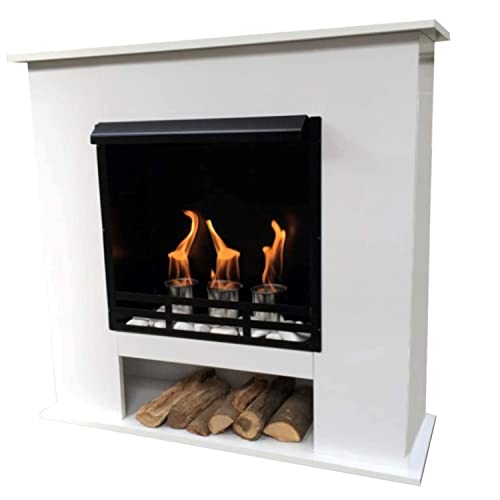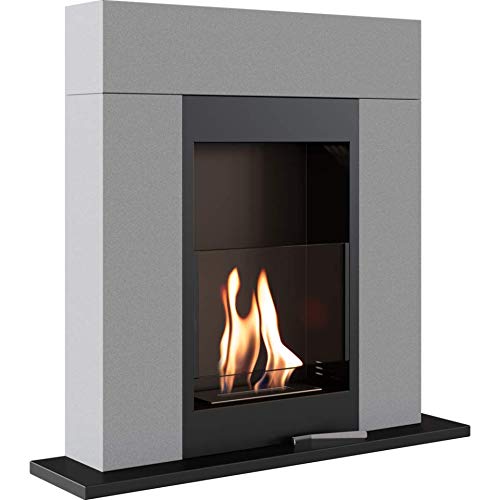17 Reasons Why You Shouldn't Beware Of Fireplace Surround
페이지 정보
작성자 Blondell Kitche… 작성일24-02-02 18:32 조회6회 댓글0건관련링크
본문
 Choosing a Fireplace Surround
Choosing a Fireplace SurroundWhether you use a fireplace to provide aesthetics or warmth, choosing the right surround can make your living space more unique. However, selecting a fireplace surround that meets standards and is safe can be a challenge.
These custom-built surrounds are built from non-combustible material that adheres to the National Fire Code. They can look great in any style home.
Simple Concrete Surround with Marble Slabs
A fireplace surround can be a focal point of a room and it can bring warmth and elegance. It can be made from a variety of materials, and designed to fit various styles of design. Before you decide on a fireplace design, it's important that you take into consideration the style and budget of the space.
Marble fireplace surrounds give an elegant look that is compatible with many different styles of design. They can be combined with rustic woods or more modern metals to create a unique and contemporary design. Marble is easy to maintain and can withstand high temperatures making it a good option for a border.
Stone is a popular material for fireplace surrounds and provides a timeless look that works in many homes. It can be carved or etched to create a modern look or left unfinished to give it a classic feel. Stacked stone veneers are another popular option that can be used to give depth and texture to rooms.
Granite is a popular option for modern surrounds for cheap fireplaces. It's tough and able to withstand heat well. It is available in many designs and colors, making it possible to create a variety of design styles. Quartzite can be also made into a shape and molded to fit an upscale surround.
The installation of a concrete surround for a fireplace may be a possibility for DIYers. This task may seem daunting however it's much simpler than you think if you work with an expert and think ahead.
It's also a good idea to consult with an expert when making a fireplace surround of marble, as it requires special care to avoid damage. A carpenter who has experience can help you to avoid costly mistakes.
If you plan to use tile as an interior fireplace surround, be sure it's suitable for high temperatures. You'll find this information on the packaging, or ask an employee at a home improvement shop.
Leaning Frame Surround
The fireplace's surround can transform an area. It's not only visually pleasing but also serves a practical purpose. It shields the wall that surrounds the fireplace from damage and reflects heat back into the space. It comes in a variety materials and is customizable for any style or decor.
The right material is crucial for achieving a well-planned aesthetic. Concrete is an excellent choice due to its durability and non-flammable. It also offers lots of visual appeal with its natural texture and color. Concrete is typically poured into molds to give you the possibility of making a unique shape.
Layers are important when creating your leaning frames. This helps the piece look deliberate and thoughtful instead of being randomly placed on the shelf or wall. Leaning frames are dangerous, so if you're planning to display heavy objects like lamps or vases, place a small piece of drawer liner made of rubber under the base to prevent them from slipping or damaging surfaces.
You could consider adding a wooden piece to the bottom of a concrete or marble surround. This will help to keep it in its place. It can also reduce the weight and prevent the object from moving as you sip your cup of wine or coffee in front of your fireplace.
After you have chosen the material, it's time to construct the piece. First, mark your new wall with the dimensions of the surround and then use a saw to cut cleats along each of these marks. Make sure that the cleat on top is at least 1 foot shorter than the shelf.
Attach the brackets to the wall. Make sure that the bolts are inserted through the backerboard and into the stud. If necessary, pre-drill the screw holes. Then put the mantel in a clamp that is temporarily on the backer board. Screw the mantel with the lag bolts (2-4 bolts per stud). Make sure that the bolts are long enough to cover 2/3 of the mantel's thickness plus the thickness of the backer board.
Black Firebox Surround
Fireplace surrounds play a useful and decorative role. They shield walls from heat damage and reflect some of the heat into the space, and can make a fireplace the focal point of the space. The most popular materials used for fireplace price surrounds are metal and wood. Metal surrounds are sometimes required by building codes to safeguard nearby combustible surfaces or they can simply enhance the look of a fireplace, making it look complete.
The fireplace in this modern living space features a black firebox surround with white marble accents. The stone is more expensive and requires more care than wood, however it provides a striking design feature to the room. The black finish also brings with the dark tones of the wood flooring and furniture for an overall design.
Concrete isn't just used for sidewalks and driveways. It's also a versatile and attractive material that can be used to enclose fireplaces near Me. It can be poured into place and then shaped into any shape, offering the user a variety of design options. The concrete surround has been designed into a curving profile, creating an elegant, modern look that contrasts with the darker hues of the wood floor and brick wall.
Another popular material for fireplace surrounds is wood which comes in a variety of textures and colors to fit into any decor. Wooden surrounds can be crafted in any shade to match your hearth pad. They are lighter and less expensive than the masonry surrounds. Most wooden surrounds are designed to hold household decorations above the mantel, including lamps and vase.
Certain wood surrounds come with a faceplate which covers the top of the mantel and houses the fireplace doors. This plate can be hung to the mantel using hinges or decorative fasteners which resemble the appearance of iron.
When choosing a wood mantel or metal fireplace surround It is essential to consider the height of your chimney. Building codes require minimum clearance distances to prevent the spread of fire into the home. This distance can vary depending on the kind of fireplace you have and also from state state or country to country.
Simple Wood Surround
If you want your fireplace to have a traditional wood look, there are many different types of surrounds available for purchase. Certain surrounds are constructed of solid oak, while others combine stone legs with pine or oak mantels. You can also choose from pine or oak fire surrounds, which are designed to be a low-cost and easy choice.
Many people choose to purchase a pre-made wood fireplace surround as it's an affordable way to get the look they want without having to hire a carpenter. The pre-made pine surrounds come in a variety of finishes that allow you to blend them into your existing decor.
A hand-crafted wood fire surround constructed from top quality oak is also a popular choice. It can be stained to a light oak colour or left untreated to let the natural golden brown of the wood to show through. This fireplace surround is suitable for gas or wood burning fires and can be fitted either with an arched or flat opening.
There are many tutorials available online for those with more experience with DIY home improvement projects. They can help you make your own fireplace surround from wood. One example is this complete step-by-step tutorial from H2O Bungalow that shows you how to construct a rustic inspired wood surround out of pine.
The tutorial will show you how to construct the horizontal part of the fireplace surround first, and then how to construct the columns or pilasters vertically that support the mantel. After these are built, you can install the mantel. The guide will show you how to install the crown molding, which will fill in any gaps between the cladding of the wall and the surrounding wall.
 It is essential to adhere to the local fire code when installing a wooden surround around a fireplace. You should keep the surround 6 inches from the edge of the opening. It is also crucial to use a non-flammable adhesive to join the decorative molding and make sure that it stays in place after the surround is put in place.
It is essential to adhere to the local fire code when installing a wooden surround around a fireplace. You should keep the surround 6 inches from the edge of the opening. It is also crucial to use a non-flammable adhesive to join the decorative molding and make sure that it stays in place after the surround is put in place.댓글목록
등록된 댓글이 없습니다.

